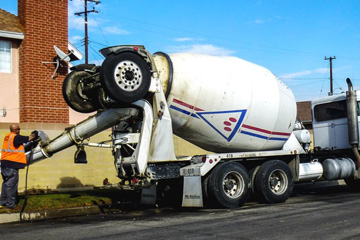
The construction industry is on the brink of a revolutionary transformation, with innovations and technological advancements reshaping the way concrete deliveries are conducted. Concrete, the backbone of infrastructure development, has traditionally been delivered through conventional methods. However, the need for greater efficiency, sustainability, and safety has driven researchers, engineers, and companies to explore cutting-edge solutions. In this article, we will explore ten innovative trends that are poised to shape the future of concrete deliveries.
Autonomous Concrete Delivery Vehicles
Autonomous vehicles have gained significant traction in various industries, and concrete delivery is no exception. Equipped with sophisticated sensors and advanced AI algorithms, autonomous concrete trucks are capable of navigating complex job sites, reducing human error, and optimizing routes for the most efficient deliveries. These vehicles will improve safety on construction sites, reduce labor costs, and increase overall productivity.
Drones for Concrete Transport
Drones are rapidly transforming industries with their speed and versatility. In the future, drones could be employed to transport small batches of concrete to hard-to-reach areas or challenging terrains. This technology will enable rapid and precise concrete placements in locations that were previously inaccessible, making it ideal for emergency repairs and construction in remote regions.
3D Concrete Printing
3D concrete printing is revolutionizing the construction industry. By using robotic arms to extrude concrete layer by layer, this technology can create intricate and complex structures in less time and with reduced waste. In the future, on-site 3D concrete printers may be employed to deliver custom-designed concrete elements directly to the construction site, eliminating the need for transportation and reducing environmental impacts.
Electric Concrete Mixers
The push towards sustainability has prompted the development of electric concrete mixers. Traditional diesel-powered mixers contribute to pollution and greenhouse gas emissions. Electric mixers, powered by renewable energy sources, offer a greener and more sustainable alternative, reducing the carbon footprint of concrete deliveries while enhancing the overall environmental impact of construction projects.
Real-time Concrete Monitoring
Ensuring the quality and performance of delivered concrete is critical to the success of construction projects. Real-time concrete monitoring systems can provide comprehensive data on concrete temperature, slump, strength, and other properties. By utilizing IoT sensors and cloud-based platforms, suppliers and contractors can track the concrete's condition during transit, ensuring it arrives at the site in optimal condition.
Blockchain in Supply Chain Management
Blockchain technology is finding applications across various industries, and construction supply chains can benefit from its decentralized and transparent nature. By implementing blockchain, concrete deliveries can be seamlessly tracked and verified, ensuring the accuracy of orders, deliveries, and payments. This enhanced traceability will lead to greater accountability and reduced instances of fraud or disputes.
Self-Healing Concrete
Cracks in concrete structures can lead to structural degradation and maintenance challenges. Self-healing concrete, a material that repairs its own cracks, offers a promising solution. Microcapsules containing healing agents within the concrete matrix are ruptured when cracks form, releasing the healing agents to repair the damage. This innovation will not only extend the lifespan of concrete structures but also reduce the frequency of concrete deliveries for repairs.
Augmented Reality (AR) for Concrete Placement
AR technology can revolutionize concrete placement by providing real-time guidance to workers. Through AR-enabled smart glasses or devices, workers can visualize the concrete pouring process with precision, ensuring accurate placements and reducing the likelihood of errors. This technology will optimize the use of concrete, minimize wastage, and improve overall construction efficiency.
Hydrophobic Concrete Coatings
Concrete exposed to harsh weather conditions is susceptible to damage from water infiltration. Hydrophobic concrete coatings can mitigate this issue by repelling water and preventing water-induced degradation. Implementing hydrophobic coatings during concrete deliveries will enhance the durability of structures, reducing maintenance needs and prolonging their lifespan.
Eco-friendly Concrete Alternatives
In the quest for sustainable construction materials, researchers are exploring eco-friendly alternatives to traditional concrete. Materials such as geopolymer concrete, made from industrial by-products, and concrete mixed with recycled aggregates are gaining popularity. The future of concrete deliveries may see a shift towards these greener alternatives, which not only reduce the environmental impact but also enhance the circular economy within the construction sector.
Conclusion
The future of concrete suppliers is teeming with possibilities, driven by technological advancements, environmental considerations, and the need for improved efficiency. From autonomous vehicles and drones to self-healing concrete and eco-friendly alternatives, these innovations and trends will revolutionize the construction industry, streamlining processes, enhancing sustainability, and shaping a more resilient future. As these advancements continue to evolve, collaboration between researchers, suppliers, contractors, and policymakers will be essential in bringing these transformative ideas to fruition and building a better world for generations to come.